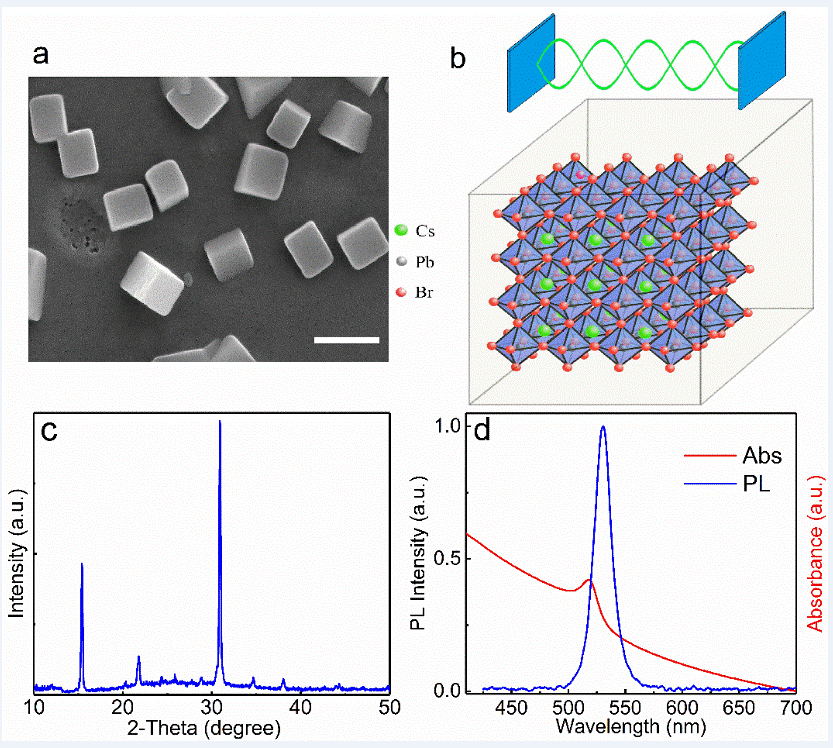Miniaturized coherent light sources possessing excellent optical performance have attracted increasing attention for potential commercial applications in on-chip optical communication, sensing, computing and biomedical imaging. However, conventional all-dielectric structured lasers suffer from the ultimate miniaturization limit related to half the wavelength. And the competition between optical gain and cavity losses poses another challenge for further size shrinking of the nanolasers.
Recently, with controlled morphology, lead halide perovskites have emerged as a promising candidate in micro/nano lasers due to their excellent properties. However, current nanolasers based on individual perovskite, such as nanoplate whispering-gallery mode (WGM) laser and nanowire Fabry-Pérot (F-P) laser, have not been scaled down to nanometer scale in all three dimensions, especially the cavity length along which the lasing modes oscillating is in the order of micron scale. Therefore, further exploration of all-dielectric subwavelength nanolasers with good performances is becoming imperative.
A collaborative research team led by State Key Laboratory of High Field Laser Physics, Shanghai Institute of Optics and Fine Mechanics of Chinese Academy of Sciences (CAS) and Chongqing University has succeeded in reducing the laser size to subwavelength scale in three dimensions using an individual CsPbBr3 perovskite nanocuboid with good performance. The physical volume of the CsPbBr3 nanocuboid laser is only ~0.49λ3..
In their experiment, the perovskite nanocuboids have a perfect cubic shape with flat and smooth end facets and averaged side lengths around 400 nm by optical characterizations, which can form an ideal F-P cavity, naturally. The single mode lasing at room temperature has been realized with high gain, low threshold and high quality factor under one- and two-photon excitation. Moreover, the ultrafast transient absorption spectroscopy reveals the origin mechanism of optical gain and temperature insensitive emission behavior from 180 to 380 K has also been demonstrated. This research may lead to a miniaturized platform for nanolasers and integrated on-chip photonic devices in nanoscale.
The study, entitled “Robust Subwavelength Single-Mode Perovskite Nanocuboid Laser”, was published in ACS Nano on May 10, 2018. This work was supported by the Strategic Priority Research Program of CAS and the National Natural Science Foundation of China.

Characterizations of perovskite CsPbBr3 nanocuboids
Contact:
Mr. Cao Yong
General Administrative Office
Shanghai Institute of Optics and Fine Mechanics, CAS
Email: caoyong@siom.ac.cn